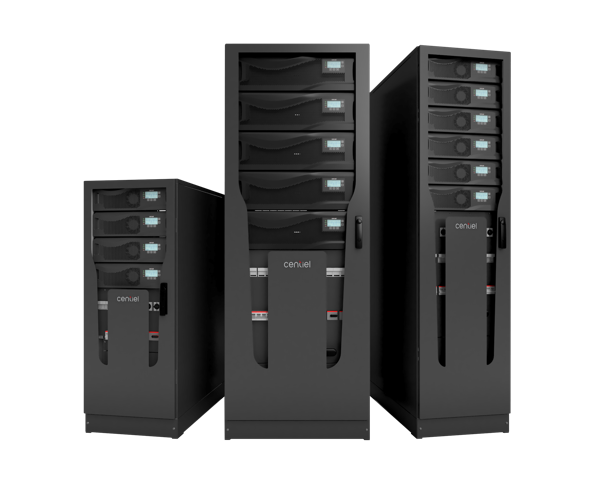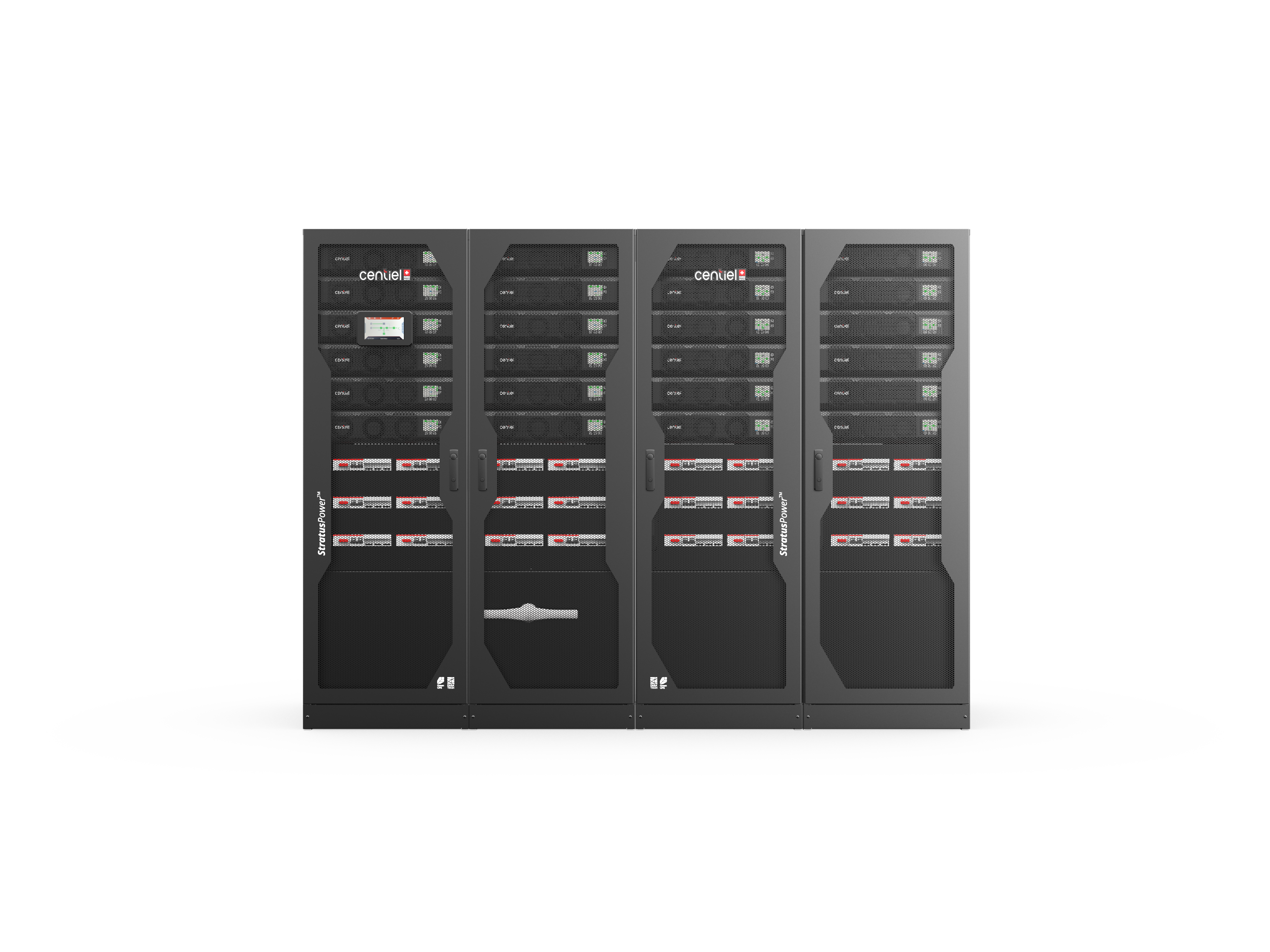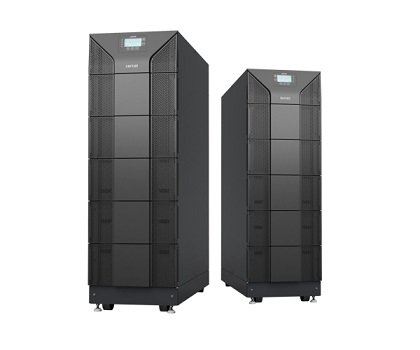Lithium Battery
Advances in technology over the years now means the latest generation of UPS are now around 97% efficient. However, we have used the same lead-acid
or VRLA batteries as the UPS’s back-up power store for around 30 years! They still do their job and they do it well: so why change? The challenge with VRLA batteries is that they still require a temperature of around 20°C to optimise their useful life. An industry standard estimate is that for every 10 degrees above 20°C the operating life of a VRLA battery is halved. Therefore, one area which may encourage the widespread adoption of an alternative such as Li-ion batteries into data centres, is the need for energy management. Li-ion batteries offer an alternative to VRLA as they are happy running at much higher temperatures: up
to high twenty/low thirty degrees centigrade. Most IT systems also work at >25°C and the UPS technology itself can work well up to 40°C. Certainly, in many
European countries this could mean that the natural air temperature (which on average is between 20-22°C) could remove the need for air-conditioning
all together. This would result in significant savings on data centre running costs and reduced carbon footprints. Space saving is also a potential advantage. Many data centres have enough room to house Lead Acid batteries without a problem. However, where space is at a premium, Li-ion batteries typically require
one third of the physical space of the equivalent VRLA blocks and are less than a quarter of the weight. These space-saving characteristics may offer advantages to smaller regionally based, edge data centres for example.
What are the benefits of Li-ion?
Is your UPS
Li-ion ready?
Up until now, one drawback of switching to Li-ion has been the higher up-front cost. However, prices have been driven down by the automotive industry
in recent years and over the past decade have reduced significantly. We generally find the initial CAPEX cost of buying Li-ion works out to be twice
as expensive as with Lead Acid batteries. However, Li-ion lasts twice as long. Ten-year design life Lead Acid batteries are normally replaced every seven or
eight years. With Li-ion this is 13-15 years. So, when this plus the overall energy saving calculations are also considered, Li-ion can reduce the total cost of
ownership (TCO), outweighing apprehension about the initial investment. In the past, there have been safety concerns relating to Li-ion batteries. However, the technology has moved on. The management and testing of Li-ion batteries is covered by the IEC62619 standard which was introduced internationally over two years ago and relates specifically to the control systems in industrial batteries. Li-ion batteries are more sensitive to how they are charged and discharged since some Li-Ion materials release O2 at high temperatures during overcharging conditions or simply thermal run away, therefore are all required by IEC62619 to have an internal battery management system (BMS). This prevents the organic liquid electrolyte becoming too hot through over or undercharging. The BMS
provides a warning if the safe envelope voltage range is exceeded and then the compatible UPS can respond. If this is ignored, a level two alarm is linked
to a circuit breaker to prevent further charging or discharging of the cell. This double protection level needs to be implemented and tested to comply with
IEC62619 regulation. Every battery, including Lead-acid batteries, are a potential hazard but managed correctly, Li-ion technology has now been developed to be safe to use in data centres and other facilities requiring critical power protection. There are different types of Li-ion batteries’ materials available, NCM, LCO, LMO and LFP are the most commonly used. A material with high stability in any condition is needed. The safest and more reliable being LFP since decomposition of LFP does not generate O2 which dramatically reduces the risk of explosion. The future will undoubtedly see the increased adoption of Li-ion in the UPS industry. However, systems do need to be Li-ion ready, and manufacturers of UPS equipment need to ensure their technology is compatible and can ‘talk’ to the Liion battery monitoring system. Interestingly, the adoption of Li-ion within UPS systems so far, has been greater in developing countries in
Africa and the Middle East, where the main power grid is less reliable than in the UK and frequent power problems are more commonplace. In these instances, the UPS and battery systems are required to be cycled several times per day. This greater take| up is primarily due to the higher cycling life of Li-ion: typically, 3,000 power-up and down cycles compared with around 300 for VRLA technology. This may point to another potential application of Li-ion in the future. With increasing pressure being put on our cities’ energy supplies, demand side management of power could see data centres being paid for their excess energy. Rather like consumer solar panels, stored energy could be fed back into the grid during downtime and the UPS could move from becoming a data-backup hub to a bank account, generating income through taking advantage of power demand and use. Li-ion’s ability to be powered up and down could potentially offer interesting
applications in this area for the future. CENTIEL’s Li-ion solution is already being installed by our most forward-thinking clients, who are looking to capitalise on the advantages that Li-ion has over lead-acid batteries, namely: they are smaller, lighter, have a high-power density, longer life and operate at higher temperatures. Over the next five years we anticipate that a significant industry changeover to Li-ion will occur. The good news is that CENTIEL’s technology is already Li-ion Ready, existing lead acid battery installations have the option to upgrade to Liion in the future without needing to replace the UPS.




